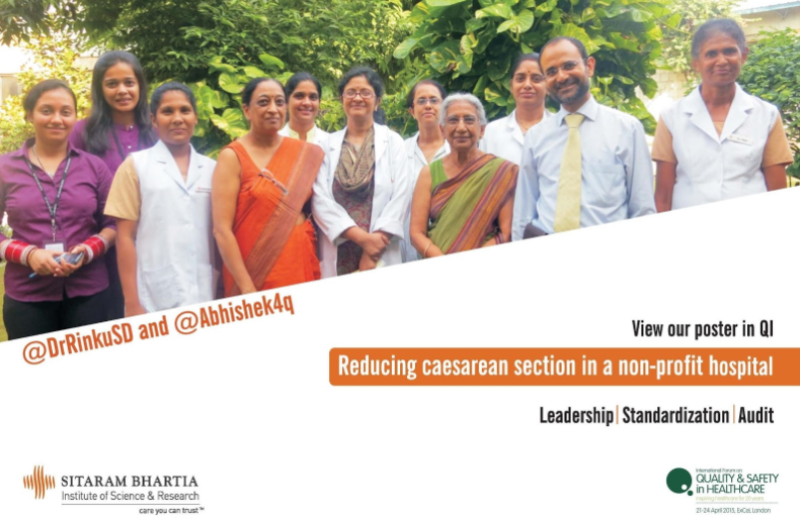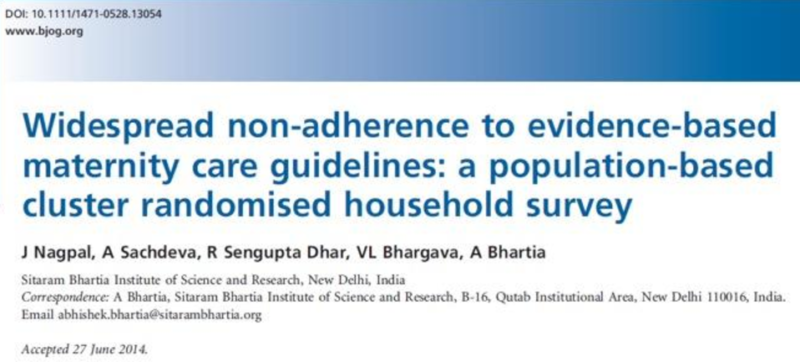Trending
An Opportunity for Changing Childbirth in India
Seeing 130,000 people sign a petition for hospitals to declare their caesarean rate, and the support it has received from Maneka Gandhi, feels like a validation of a journey we began 15 years ago.
At that time, our non-profit hospital, with some of Delhi’s leading obstetricians, had a caesarean rate of 79%. This made a mockery of our commitment to delivering ethical and high-quality care.
Despite this absurd situation, even attempting an improvement was difficult. Doctors believed that Indian women “were different” and that they could take “no risks” in a private setting.
Moreover, women often saw a caesarean as an easy way of avoiding labour pain or as a heroic action on the part of the doctor to save their baby.
Without any publicly available information about the caesarean rate of either the hospital or of a particular consultant, there was no pressure to change.
When we started an initiative to lower our cesarean rate, we thought all we would have to do was closely monitor it and align our care with medical practice guidelines. But despite our persistent efforts our progress stalled. We were trying to do something that had no precedent in our environment and our doctors felt vulnerable about practicing in any way that was different from their colleagues.
Over time one consultant in our unit began making small changes in her practice. She sensitized couples about the importance of a normal delivery and trained nurses to provide one-on-one labour support. As she brought down her own caesarean rate, others in our unit followed.

Along this journey, even though our caesarean rate remained high, we felt we had to hold ourselves accountable and openly share this information. We first published our rate for 2013 when it was 40% – far above the 10-15% rate recommended by the WHO.
I’m happy to report our caesarean rate has come down. Our staff gynaecology unit finished 2016 with an 88% vaginal delivery rate for first-birth, low-risk mothers.
Caesarean section is a major surgery that carries risks for infections, bladder and bowel injuries, and serious complications in future pregnancies. Babies born by caesarean section are at higher risk for respiratory problems and may even be at higher risk for developing obesity, diabetes and asthma in later life.
Despite these risks, caesarean rates in private hospitals of urban India continue to be unjustifiably high. Our own ICMR-funded research found a 54% caesarean rate in Delhi’s private hospitals while the National Family Health Survey – 4 found rates as high as 75% in private urban health facilities across some states!

British Journal of Obstetrics and Gynaecology
People are rightly concerned about the overuse of caesarean sections and are understandably frustrated by the lack of urgency for dealing with this issue. All hospitals already report data on number of normal versus caesarean deliveries to the Directorate of Health Services. Making this information public will be significant step towards creating accountability in the healthcare system and helping women make better informed choices.
Our experience shows that dedication on part of doctors along with support from hospital administrators can lead to positive change. Subarna Ghosh’s petition has created the right environment for all healthcare leaders to commit to transparency around caesareans and to make normal deliveries normal again.
Author’s bio: Abhishek Bhartia is director of Sitaram Bhartia Institute of Science and Research, a nonprofit hospital and medical research centre in Delhi. He is co-author of an Indian Council of Medical Research funded survey of quality of maternity care in Delhi.